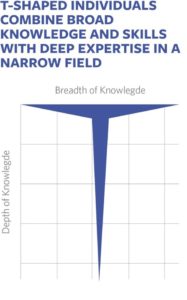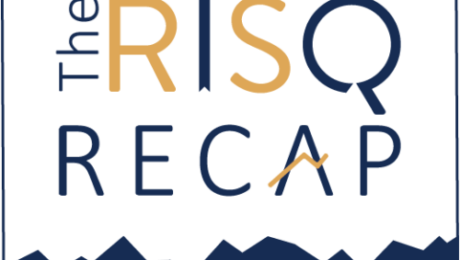The RISQ RECAP – May 23rd – May 27th, 2022
May 23rd – May 27th, 2022
Each week, you’ll find specially curated news articles to keep you up to date on the ever-evolving world of insurance and risk management. The articles are divided out between items relevant to Property & Casualty, Employee Benefits/Human Resources, and Compliance. We’ve included brief summaries of each item as well as a link to the original articles.

PROPERTY & CASUALTY
Inflation Drives 33% Surge in Auto Telematics Adoption in Q1 2022: TransUnion
“TransUnion’s latest Personal Lines Insurance Shopping Report found the number of consumers who accepted a telematics offer from their auto insurance provider increased 33% since the end of 2021—a trend driven by consumers hoping to lower their premiums by demonstrating safe driving habits. Telematics programs use connected devices, mobile phones, or auto manufacturer car apps to monitor and report detailed driving behavior. Similarly, in homes, connected devices monitor for warning of fires, water leaks, and other hazard risks.” Full Article
– Insurance Journal

EMPLOYEE BENEFITS, HUMAN RESOURCES, & COMPLIANCE
Employee Benefits Might Still Facilitate Abortions and Reproductive Choice in a Post-Roe v. Wade America “If the Supreme Court ultimately overturns Roe, all employers should review their health plans to see what, if any, impact the applicable state laws will have. Employers will need to consider many factors, including [1] the types of abortion-related benefits to be offered; [2] whether the type of health plan involved (e.g., self-funded or fully-insured) offers any strategic protections; and [3] any federal guidance the DOL and IRS may issue.” Full Article – Michael Best
Plaintiffs’ Bar Shows Renewed Interest in COBRA Notice Litigation “Class action cases filed against high-visibility defendants in Georgia, Michigan, Florida, and elsewhere allege the companies violated federal law when they sent purportedly inaccurate, threatening, or confusing notices of former employees’ rights to elect to continue medical-insurance coverage after their employment ended.” Full Article – Jackson Lewis P.C.
The Impact of Expanding Pre-Deductible Coverage in HSA-Eligible Health Plans on Premiums “The impact on premiums of expanding pre- deductible coverage for 14 services in HSA- eligible health plans is small. Estimated premium increases range from virtually zero to 1.5 percent. EBRI found a 0.9 percent increase in premiums when use of health care services was assumed to increase because of the lower cost sharing and when employers did not impose any cost sharing.” Full Article – Employee Benefit Research Institute [EBRI]
Is the IRS Going to Fix the ‘Family Glitch’? “The IRS issued a proposed rule on April 5, 2022 to close a loophole in the ACA policy affecting subsidies in the ACA marketplace. This proposal could indirectly affect employers as many spouses and dependents may elect to enroll in the ACA marketplace plans instead of the employer plan. This also opens the door for more employers to encourage spouses and dependents off their plans by increasing the cost that they pay to stay on the plan.” Full Article – Conrad Siegel Actuaries
Court Blocks Enforcement of Certain ACA Section 1557 and Title VII Nondiscrimination Rules Against Christian Employers Group n “The court issued a preliminary injunction enjoining HHS from interpreting or enforcing Section 1557 and its regulations against the group’s present or future members in a manner that would [1] require them to provide, offer, perform, facilitate, or refer for gender transition services, or [2] prevent, restrict, or compel the group members’ speech on gender identity issues. Furthermore, the EEOC is enjoined from interpreting or enforcing Title VII against the group, its insurers, or TPAs in a manner that would require the group’s present or future members to provide insurance coverage for gender transition services.” Full Article – Thomson Reuters / EBIA
Third Circuit: ACA Individual Mandate Penalties Are Entitled to Priority Under the Bankruptcy Code “The IRS asserted that the debtors owed more than $900 for failing to maintain health insurance coverage in violation of the ACA’s individual mandate during 2018. The IRS characterized the payment as an excise tax that was entitled to priority under the Bankruptcy Code. The Third Circuit held that the individual mandate payment was a tax on or measured by income for bankruptcy purposes. The court relied primarily on a six-factor test under Third Circuit precedent for determining whether a payment is a tax.” Full Article – Thomson Reuters Practical Law

STATE & INTERNATIONAL COMPLIANCE
In addition to the RISQ Review, RISQ Consulting also provides a resource that features changes and updates to State and International Compliance measures. We’ve included brief summaries of each item below, and also provided links to the original articles if you’d like to read further.
California
Cal/OSHA Releases Updated FAQs & Fact Sheets for Third Readoption of ETS
“Cal/OSHA posted an update to the Revisions to the ETS FAQ. This FAQ details the changes in the May 6th version of the ETS and requirements from prior ETS that remain. There is a separate General COVID-19 ETS FAQ that responds more to the application of the ETS and has been updated to conform to the recent changes in the ETS.” Full Article
– Jackson Lewis
Florida
What Does Florida’s ‘Stop WOKE’ Act Mean for Employers
“Florida Governor Ron DeSantis signed the ‘Stop WOKE’ Act into law. The Act’s name is intended as an acronym for ‘Stop the Wrongs to our Kids and Employees,’ but is also obviously meant to be a play on the concept of ‘woke,’ which is defined in Merriam-Webster’s Dictionary as an adjective describing one who is ‘aware of and actively attentive to important facts and issues.” Full Article
– Lus Laboris
New York
New York Enacts Employee Privacy Law
“On May 7, New York’s new employee privacy law became effective and it requires employers to provide written notice to their employees prior to engaging in certain electronic monitoring activities. The state’s attorney general is responsible for enforcing the law (as it does not expressly provide a private right of action), and businesses may face financial penalties for noncompliance.” Full Article
– Thompson Hine
Georgia
New Georgia Employment Laws Change Definition of Employment, Restrict Local Laws Regulating Work Hours
“Governor Brian Kemp has signed into law two measures addressing the employment relationship. The first, Act 809 (H.B. 389), alters the definition of employment for purposes of unemployment benefits. The second, Act 823 (S.B. 331), precludes local governments from regulating the scheduling or work hours of a private business’s employees.” Full Article
– Jackson Lewis
Maryland
Maryland Enacts New Family Leave Law
“Maryland became the latest state to establish paid family and medical leave for employees with the enactment of the Time to Care Act of 2022 (the “Act”). The Act creates a family and medical leave fund (the “Fund”) which provides paid leave benefits to covered employees and participating self-employed individuals. The Fund will be financed by contributions from (i) employees, (ii) employers with 15 or more employees, and (iii) participating self-employed individuals.” Full Article
– DLA Piper
- Published in Blog
Resources To Help Find Infant Formula During The Shortage
This article is from RISQ Consulting’s Zywave client portal, a resource available to all RISQ Consulting clients. Please contact your Benefits Consultant or Account Executive for more information or for help setting up your own login.
To address the infant formula shortage amid medical device and health care company Abbott Nutrition’s voluntary recall of certain powdered infant formulas, the Biden administration is working to ensure that formula is safe and available for families across the country. President Biden spoke with several retailers and manufacturers—including Walmart, Target, Reckitt and Gerber—to discuss ways to get formula quickly and safely onto store shelves. He also announced a series of actions to make formula more accessible, including cutting red tape on the types of formula parents can buy, calling on the Federal Trade Commission and state attorneys general to crack down on price gouging and unfair market practices, and increasing formula supply through increased imports.
As a result, manufacturers have ramped up production by 30%-50%, bringing total production above pre-recall levels with a different mix of products and sizes now available in the market. Still, many families continue to encounter challenges obtaining infant formula—especially those dependent on specialty formulas, which are used by nearly 5,000 infants as well as some older children and adults with rare medical conditions.
If you cannot readily find formula, the U.S. Department of Health and Human Services (HHS) suggests consulting the following resources.
Manufacturer Hotlines
- Gerber’s MyGerber Baby Expert—Reach a certified nutrition or lactation consultant by phone, text, Facebook Messenger, web chat or video call who can help you identify a similar formula that may be more readily available.
- Abbott’s Consumer Hotline—Call 1-800-986-8540.
- Abbott’s urgent product request line—Ask your OB-GYN or your infant’s pediatrician to submit an urgent product request by downloading and completing this form.
- Reckitt’s Customer Service line—Call 1-800 BABY-123 (222-9123).
Community Resources
- Locate your nearest Community Action Agency (CAA)—Your neighborhood CAA may be able to provide you with formula or connect you with local agencies that have formula in stock.
- United Way’s 211—Dial 211 to be connected to a community resource specialist affiliated with United Way who may be able to help you identify food pantries and other charitable sources of local infant formula and baby food.
- Feeding America—Call your local food bank to ask whether they have infant formula and other supplies in stock.
- Human Milk Banking Association of North America (HMBANA)—Certain HMBANA-accredited milk banks distribute donated breast milk to mothers in need. However, take note that some milk banks may require a prescription from a medical professional. Click here to find an HMBANA-accredited milk bank.
Special Supplemental Nutrition Program for Women, Infants and Children (WIC)-eligible Families
- Contact your local WIC office to identify or obtain additional sources of infant formula nearby.
General Guidance
- Call your OB-GYN or pediatrician to see if they have in-office samples or can suggest a similar formula that may be more readily available in stores and is nutritionally similar to your infant’s typical formula.
- Refrain from watering down formula, trying to make formula at home or using toddler formula to feed infants. Don’t discard formula unless it is expired or is part of the recall. Check your formula’s lot code to see whether it was affected by the recall.
- Consult the American Academy of Pediatrics for more guidance.
Click here to read this information in Spanish.
- Published in Blog
Fatigue – Push Past and Accomplish Your Goals
By Natasha Kwachka, Employee Benefits Service Manager
When you think about it, we are all entrepreneurs of our own lives. Continuously growing our personal networks, adding to our assets and skills, and striving to accomplish goals all in the hopes that we make an emotionally profitable life.
This noble pursuit runs concurrent with our day-to-day work, kids, school, recreation, and in some cases, additional business ventures or second part-time or full-time jobs. The pursuit is unending and requires constant effort. What can all these factors amount to? Fatigue. Annoying, draining, life sucking fatigue.
I know when I start to feel fatigue sink in, my dedication and inspiration plummets. I found this article with some helpful tips. My favorite strategy is the practice of gratitude. Finding the small things that I can be grateful for usually jump starts my drive. What will you do to keep fatigue from putting your emotional profits in the red?
- Published in Blog
The RISQ RECAP – May 16th – May 20th, 2022
May 16th – May 20th, 2022
Each week, you’ll find specially curated news articles to keep you up to date on the ever-evolving world of insurance and risk management. The articles are divided out between items relevant to Property & Casualty, Employee Benefits/Human Resources, and Compliance. We’ve included brief summaries of each item as well as a link to the original articles.

PROPERTY & CASUALTY
Most Homeowners Underinsured for Trends in Inflation, Building Costs: APCIA
“A new American Property Casualty Insurance Association (APCIA) survey of over 1,000 U.S. homeowners who have a homeowners insurance policy, reveals a majority of insured homeowners have not taken important steps to ensure their insurance coverage is keeping pace with rising inflation and increased building costs, which could leave policyholders underinsured if catastrophe strikes. Only 30% of insured homeowners have purchased more insurance or increased coverage limits to compensate for rising building costs, according to the survey conducted online by The Harris Poll. Additionally, among insured homeowners who completed renovations or remodels during the pandemic, less than half (40%) updated their home insurance to account for those changes.” Full Article
– Insurance Journal

EMPLOYEE BENEFITS, HUMAN RESOURCES, & COMPLIANCE
Summertime Brings Sunny Skies, Warm Weather and Interns “Manufacturers are preparing to welcome interns into their businesses this summer. Internship programs can play a key role in a company’s ability to develop and retain talent, cultivate new ideas and perspectives, and provide valuable mentorship and opportunity to individuals entering the field, resulting in goodwill in the professional community. With the benefits of these programs come legal challenges for employers related to structuring such programs and arrangements.” Full Article – Robinson & Cole
Modernization of Manufacturers: Safety and Cybersecurity Issues “Like many other industries, manufacturing has been hit hard with labor shortages. As of April 2022, U.S. factory activity reportedly is at its slowest pace in more than 18 months. Consequently, many factories seek more agility from artificial intelligence and other automated processes to better manage disruptions and uncertainty. With these modernizations comes the threat of potential safety and health hazards and cyber threats.” Full Article – Jackson Lewis
DHS Has Temporarily Increased Automatic Extensions of Employment Authorization and/or Employment Authorization Documents (EADs) “The U.S. Department of Homeland Security (DHS) regulations provide for an automatic extension period of up to 180 days from the expiration date stated on the Employment Authorization Document (EAD) for applicants within certain employment-eligible categories who have a timely filed and pending request to renew employment authorization and/or EAD. However, due to severe backlogs with adjudication exacerbated by the COVID-19 pandemic, on May 4, 2022, DHS published a rule to temporarily increase the automatic extension period from up to 180 days to up to 540 days.” Full Article – Littler Mendelson
MORE Than Meets the Eye? How Federal Marijuana Legalization Legislation Could Affect Employers “The U.S. House of Representative voted to pass the Marijuana Opportunity Reinvestment and Expungement (MORE) Act, which decriminalizes marijuana under federal law. Most notably, the MORE Act would remove marijuana as a “scheduled” drug under the Controlled Substances Act (CSA). The proposed MORE Act also addresses other marijuana-related topics, such as taxes, denial of federal public benefits due to marijuana use, and protections for cannabis businesses. As explained below, the MORE Act may bring change for employers.” Full Article – Bradley Arant Boult Cummings
Agencies Offer Tools to Help Employers Using AI Avoid Disability Discrimination “The U.S. Equal Employment Opportunity Commission (EEOC) and the U.S. Department of Justice (DOJ) warn employers that the use of AI (artificial intelligence) tools could expose them to liability under the Americans with Disabilities Act (ADA) if the tools screen out qualified individuals with disabilities or the employer does not provide a “reasonable accommodation” that is necessary for a job applicant or employee to be rated fairly and accurately by the algorithm.” Full Article – Phelps Dunbar
Employee Retention Credit for Independent Schools “Under the CARES Act and subsequent COVID-19 legislation, independent schools may be eligible for the Employee Retention Credit (ERC), a refundable payroll tax credit for employers, including independent schools, whose operations were fully or partially suspended because of a COVID-19 related government order, or that had certain revenue losses compared to 2019. Independent schools that have not claimed the ERC but are eligible to do so can file amended payroll tax returns. The deadline to file these returns is April 15, 2024 for the 2020 ERC and April 15, 2025 for the 2021 ERC.” Full Article – Venable

STATE & INTERNATIONAL COMPLIANCE
In addition to the RISQ Review, RISQ Consulting also provides a resource that features changes and updates to State and International Compliance measures. We’ve included brief summaries of each item below, and also provided links to the original articles if you’d like to read further.
California
Cal/OSHA Releases Updated FAQs & Fact Sheets for Third Readoption of ETS
“Cal/OSHA posted an update to the Revisions to the ETS FAQ. This FAQ details the changes in the May 6th version of the ETS and requirements from prior ETS that remain. There is a separate General COVID-19 ETS FAQ that responds more to the application of the ETS and has been updated to conform to the recent changes in the ETS.” Full Article
– Jackson Lewis
Florida
What Does Florida’s ‘Stop WOKE’ Act Mean for Employers
“Florida Governor Ron DeSantis signed the ‘Stop WOKE’ Act into law. The Act’s name is intended as an acronym for ‘Stop the Wrongs to our Kids and Employees,’ but is also obviously meant to be a play on the concept of ‘woke,’ which is defined in Merriam-Webster’s Dictionary as an adjective describing one who is ‘aware of and actively attentive to important facts and issues.” Full Article
– Lus Laboris
New York
New York Enacts Employee Privacy Law
“On May 7, New York’s new employee privacy law became effective and it requires employers to provide written notice to their employees prior to engaging in certain electronic monitoring activities. The state’s attorney general is responsible for enforcing the law (as it does not expressly provide a private right of action), and businesses may face financial penalties for noncompliance.” Full Article
– Thompson Hine
Georgia
New Georgia Employment Laws Change Definition of Employment, Restrict Local Laws Regulating Work Hours
“Governor Brian Kemp has signed into law two measures addressing the employment relationship. The first, Act 809 (H.B. 389), alters the definition of employment for purposes of unemployment benefits. The second, Act 823 (S.B. 331), precludes local governments from regulating the scheduling or work hours of a private business’s employees.” Full Article
– Jackson Lewis
Maryland
Maryland Enacts New Family Leave Law
“Maryland became the latest state to establish paid family and medical leave for employees with the enactment of the Time to Care Act of 2022 (the “Act”). The Act creates a family and medical leave fund (the “Fund”) which provides paid leave benefits to covered employees and participating self-employed individuals. The Fund will be financed by contributions from (i) employees, (ii) employers with 15 or more employees, and (iii) participating self-employed individuals.” Full Article
– DLA Piper
- Published in Blog
Training Your Staff for an Active Shooter Situation
This article is from RISQ Consulting’s Zywave client portal, a resource available to all RISQ Consulting clients. Please contact your Benefits Consultant or Account Executive for more information or for help setting up your own login.
An active shooter is an individual actively engaged in killing or attempting to kill people in a confined and populated area. To best prepare your staff for an active shooter situation, create an emergency action plan (EAP) and conduct training exercises. Together, the EAP and training exercises will prepare your staff to effectively respond and help minimize loss of life.
Components of an EAP
Create the EAP with input from several stakeholders, including HR, your training department (if one exists), facility owners or operators, your property manager, and local emergency responders. An effective EAP includes the following:
- A preferred method for reporting fires and other emergencies
- An evacuation policy and procedure
- Emergency escape procedures and route assignments (e.g., floor plans or safe areas)
- Contact information for, and responsibilities of, individuals to be contacted under the EAP
- Information concerning local area hospitals (e.g., the name, telephone number and distance from your location)
- An emergency notification system to alert various parties of an emergency including the following:
- Individuals at remote locations within premises
- Local law enforcement
- Local area hospitals
Components of Training Exercises
The most effective way to train your staff to respond to an active shooter situation is to conduct mock active shooter training exercises. Local law enforcement is an excellent resource in designing training exercises.
Training components may include the following:
- Recognizing the sound of gunshots
- Reacting quickly when gunshots are heard and/or when a shooting is witnessed:
- Evacuating the area
- Hiding out
- Acting against the shooter as a last resort
- Calling 911
- Reacting when law enforcement arrives
- Adopting the survival mindset during times of crisis
Additional Ways to Prepare For and Prevent an Active Shooter Situation
Below are steps you can take to improve preparedness:
- Ensure your facility has at least two evacuation routes.
- Post evacuation routes in conspicuous locations throughout your facility.
- Include local law enforcement and first responders during training exercises.
- Encourage law enforcement, emergency responders, SWAT teams, K-9 teams and bomb squads to train for an active shooter scenario at your location.
Emergency Numbers
In addition, make sure to have the phone numbers on hand for the following:
- Emergency services
- Local emergency information line
- Local police department
- Local fire department
- Local hospital
- Local FBI field office
- Facility security
Make sure your facility’s address, including floor, suite and/or room numbers, is also easily accessible, along with your office phone number and extension.
For more information on creating an EAP, contact the U.S. Department of Labor, Occupational Health and Safety Administration, www.osha.gov.
Preparing for and Managing an Active Shooter Situation
Your HR department and facility managers should engage in planning for emergency situations, including an active shooter scenario. Planning for emergency situations will help to mitigate the likelihood of an incident by establishing the mechanisms described below.
Human Resources’ Responsibilities
The following are responsibilities of HR professionals:
- Conduct effective employee screening and background checks.
- Create a system for reporting signs of potentially violent behavior.
- Make counseling services available to employees.
- Develop an EAP which includes policies and procedures for dealing with an active shooter situation, as well as after action planning.
Facility Manager Responsibilities
The following are responsibilities of facility mangers:
- Institute access controls (e.g., keys and security system passcodes).
- Distribute critical items to appropriate managers and employees, including the following:
- Floor plans
- Keys
- Facility personnel lists and telephone numbers
- Coordinate with the facility’s security department to ensure the physical security of the location.
- Assemble crisis kits containing the following:
- Radios
- Floor plans
- Staff roster and staff emergency contact numbers
- First-aid kits
- Flashlights
- Place removable floor plans near entrances and exits for emergency responders.
- Activate the emergency notification system when an emergency situation occurs.
Reactions of Managers during an Active Shooter Situation
Employees and customers are likely to follow the lead of managers during an emergency situation. During an emergency, managers should be familiar with their EAPs and be prepared to do the following:
- Take immediate action.
- Remain calm.
- Lock and barricade doors.
- Evacuate staff and customers via a preplanned evacuation route to a safe area.
Assisting Individuals with Special Needs and/or Disabilities
To assist those with special needs and disabilities, ensure that EAPs, evacuation instructions and any other relevant information addresses individuals with specials needs and/or disabilities.
Recognizing Potential Workplace Violence
An active shooter in your workplace may be a current or former employee, or an acquaintance of a current or former employee. Intuitive managers and co-workers may notice characteristics of potentially violent behavior in an employee. Alert your HR department if you believe an employee or co-worker exhibits potentially violent behavior.
Indicators of Potential Violence by an Employee
Employees typically do not just “snap,” but display indicators of potentially violent behavior over time. If these behaviors are recognized, they can often be managed and treated. Potentially violent behaviors by an employee may include one or more of the following:
- Increased use of alcohol and/or illegal drugs
- Unexplained increase in absenteeism; vague physical complaints
- Noticeable decrease in attention to appearance and hygiene
- Depression and/or withdrawal
- Resistance and overreaction to changes in policy and procedures
- Repeated violations of company policies
- Increased severe mood swings
- Noticeably unstable, emotional responses
- Explosive outbursts of anger or rage without provocation
- Suicidal; comments about “putting things in order”
- Behavior which suggests paranoia (“everybody is against me”)
- Increasingly talks of problems at home
- Escalation of domestic problems into the workplace; talk of severe financial problems
- Talk of previous incidents of violence
- Empathy with individuals committing violence
- Increase in unsolicited comments about firearms, other dangerous weapons and violent crimes
Remember that this list of behaviors is not comprehensive, nor is it intended as a mechanism for diagnosing violent tendencies.
Managing the Consequences of an Active Shooter Situation
After the active shooter has been incapacitated and is no longer a threat, HR and/or management should engage in post-event assessments and activities, including the following:
- An accounting of all individuals at a designated assembly point to determine who, if anyone, is missing and potentially injured
- Determining a method for notifying families of individuals affected by the active shooter, including notification of any casualties
- Assessing the psychological state of individuals at the scene, and referring them to health care specialists accordingly
- Identifying and filling any critical personnel or operational gaps left in the organization as a result of the active shooter
Lessons Learned
To facilitate effective planning for future emergencies, it is important to analyze the recent active shooter situation and create an after action report. The analysis and reporting contained in this report is useful for the following:
- Serving as documentation for response activities
- Identifying successes and failures that occurred during the event
- Providing an analysis of the effectiveness of the existing EAP
- Describing and defining a plan for making improvements to the EAP
How to Respond to an Active Shooter
In most cases, there is no pattern or method to active shooters’ selection of victims, and the situations are unpredictable and evolve quickly. Typically, the immediate deployment of law enforcement is required to stop the shooting and mitigate harm to victims.
Because active shooter situations are often over within 10 to 15 minutes—before law enforcement arrives on the scene—individuals must be prepared both mentally and physically to deal with an active shooter situation.
Good Practices for Coping with an Active Shooter Situation
Below are some general practices for coping with an active shooter:
- Be aware of your environment and any possible dangers.
- Take note of the two nearest exits in any facility you visit.
- If you are in an office, stay there and secure the door.
- If you are in a hallway, get into a room and secure the door.
- As a last resort, attempt to take the active shooter down. When the shooter is at close range and you cannot flee, your chance of survival is much greater if you try to incapacitate him or her.
- Call 911 when it is safe to do so.
How to Respond When an Active Shooter is in Your Vicinity
Quickly determine the most reasonable way to protect your own life. Remember that customers and clients are likely to follow the lead of employees and managers during an active shooter situation.
1. Evacuate
If there an accessible escape path, attempt to evacuate the premises:
- Have an escape route and plan in mind.
- Evacuate regardless of whether others agree to follow.
- Leave your belongings behind.
- Help others escape, if possible.
- Prevent individuals from entering an area where the active shooter may be.
- Keep your hands visible so the shooter does not see you as an immediate threat.
- Follow the instructions of any police officers.
- Do not attempt to move wounded people.
- Call 911 when you are safe.
2. Hide Out
If evacuation is not possible, find a place to hide where the active shooter is less likely to find you. Your hiding place should have the following characteristics:
- Be out of the active shooter’s view
- Provide protection if shots are fired in your direction (e.g., an office with a closed and locked door)
- Not trap your or restrict your options for movement
You should also take some basic steps to prevent a shooter from noticing your presence or entering your hiding place:
- Lock any doors, if possible.
- Blockade the door with heavy furniture.
- Silence your cell phone and/or pager.
- Turn off any source of noise (e.g., radios or televisions).
- Hide behind large items (e.g., cabinets or desks).
- Remain as quiet as possible.
If evacuation and hiding are not possible:
- Remain calm.
- Dial 911 to alert police to the active shooter’s location, if possible.
- If you cannot speak, leave the line open and allows the dispatcher to listen.
3. Take action against the active shooter
As a last resort, and only when your life is in imminent danger, attempt to disrupt and/or incapacitate the active shooter by doing the following:
- Activing as aggressively as possible against him or her
- Throwing items and improvising weapons
- Yelling
- Committing to your actions
How to Respond When Law Enforcement Arrives
Law enforcement’s purpose is to stop the active shooter as soon as possible. Officers will proceed directly to the area in which the last shots were heard:
- Officers usually arrive in teams of four.
- Officers may wear regular patrol uniforms or external bulletproof vests, Kevlar helmets and other tactical equipment.
- Officers may be armed with rifles, shotguns or handguns.
- Officers may use pepper spray or tear gas to control the situation.
- Officers may shout commands, and may push individuals to the ground for their safety.
When law enforcement arrives, do the following:
- Remain calm, and follow officers’ instructions.
- Put down any items in your hands (e.g., bags or jackets).
- Immediately raise your hands and spread your fingers.
- Keep your hands visible at all times.
- Avoid making quick movements toward officers, such as holding on to them for safety.
- Avoid pointing, screaming or yelling.
- Do not stop to ask officers for help or direction when evacuating, just proceed in the direction from which officers are entering the premises.
Provide the following information to law enforcement or the 911 operator:
- Location of the active shooter
- Number of shooters, if there is more than one
- Physical description of the shooter(s)
- Number and type of weapons held by the shooter(s)
- Number of potential victims at the location
The first officers to arrive to the scene will not stop to help injured persons. Instead, expect rescue teams comprised of additional officers and emergency medical personnel to follow the initial officers. These rescue teams will treat and remove any injured persons. They may also call upon able-bodied individuals to assist in removing the wounded from the premises.
Once you have reached a safe location or an assembly point, you will likely be held in that area by law enforcement until the situation is under control and all witnesses have been identified and questioned. Do not leave until law enforcement authorities have instructed you to do so.
There are other steps you can take to prevent an active shooter situation. For comprehensive articles and posters to safeguard your business and your employees, contact your partners at RISQ Consulting.
Source: U.S. Department of Homeland Security’s, Active Shooter – How to Respond
- Published in Blog
Learn Long and Prosper
By Ashley Snodgrass, Employee Benefits Analyst
Lifelong learning can be a topic so over discussed that the mere mention will cause eyes to roll. The phrase “lifelong learning” can take on a trite flavor, especially this time of year. With the month of May holding the flurry of end-of-school year celebrations, we may be reminded of our own past educational endeavors or hear rousing graduation speeches that signal the days of learning in the past. However, I encourage you to set aside your preconceived notions and open your mind to the possibilities if you were to incorporate intentional learning in your day-to-day life.
What’s the point? What is the reason some people are obsessed with lifelong learning? Let’s approach this from an academic perspective. The PEW Charitable Trusts published an article in 2020 questioning, “Lifelong Learning Will Be the New Normal – But Are We Ready?”. The article explains how as humans live longer lives, our work lives could be extended beyond the typical retirement age of 65. Further, the author discusses the impacts of the increasing presence of technology. The need for “T-Shaped Individuals” will increase, as workers will need a combination of “technical knowledge + human skills”. While this article dives deep into these ideas, my goal is to make some suggestions for ways to incorporate learning as a habit into daily life.

In the digital world, the stream of content can be overwhelming. I would suggest choosing a specific area of study that you are interested in, then choose a medium that best can fit into your life. Topics to study could range from a technical topic to help in your work life, to parenting, current events, history, productivity, nutrition, latest scientific advances, and more.
As for how to consume all this great information; the choices can be overwhelming. Here are some suggestions for platforms to help you add more learning to your life every day:
For the LISTENERS
- Audible for audiobooks.
- Libby to rent audiobooks from your local library.
- Podcasts (Many platforms like Apple, Spotify, Overcast, Podbeam, etc.) to learn about science, history, politics, and so much more. A fantastic podcast dedicated to lifelong learning is Ologies.
For the READERS
- Blinkist to read or listen to book summaries if you’re short on time (or attention).
For the WATCHERS
- YouTube look up TedTalks or content on any subject that interests you. Some great educational channels for adults are Smarter Every Day, Veritasium, and Kurzgesagt.
- Skillshare is a platform where you can learn anything from plant care to cookie photography tips to Excel best practices.
- Masterclass is another platform with classes taught by celebrities and well-known professionals, such as cooking with Gordon Ramsey or writing with Judy Blume.
I’ll end with one final thought. It was Henry Ford who famously said, “Anyone who stops learning is old, whether at twenty or eighty. Anyone who keeps learning stays young.”
- Published in Blog
The RISQ RECAP – May 9th – May 13th, 2022
May 9th – May 13th, 2022
Each week, you’ll find specially curated news articles to keep you up to date on the ever-evolving world of insurance and risk management. The articles are divided out between items relevant to Property & Casualty, Employee Benefits/Human Resources, and Compliance. We’ve included brief summaries of each item as well as a link to the original articles.

PROPERTY & CASUALTY
Takeaways from Our Conversation with Cannabis Data Chief
“Global cannabis sales for 2022 will reach just over $35 billion, and will almost double that in the next few years – and with newly legal states coming online, continued growth in the big states, more products, and more marketing of those products, it’s not hard to believe. A report from BDSA provides a deep look at where the industry is heading, but there’s a lot more behind the numbers to know for cannabis businesses and firms that serve those businesses. The report outlines key takeaways, market forecasts and consumer insights.” Full Article
– Insurance Journal

EMPLOYEE BENEFITS, HUMAN RESOURCES, & COMPLIANCE
DOL and HHS Meet with Health Insurance and Business Leaders to Discuss Mental Health, Substance Use Disorder Parity “DOL Secretary Marty Walsh and HHS Secretary Xavier Becerra met with industry leaders in a constructive dialogue, with commitments from attendees to continue to engage on these critical issues. They also raised the importance of contraceptive coverage and the need to do more to ensure women and families get this essential care.” Full Article – U.S. Department of Labor
Sixth Circuit: Employers Act as Fiduciaries When Managing Premium Payments for Benefit Plan “This case serves as an important reminder to employers that they may be held liable where their employees experience a loss in coverage under their welfare benefit plans from the mishandling of premium payments.” Full Article – The Wagner Law Group
State Policy Levers to Improve Access to Telebehavioral Health “States are utilizing a variety of policy levers to maintain access to telebehavioral health services. Commonly used levers include: [1] Creating allowances for out-of-state behavioral health providers; [2] Enabling coverage for audio-only telebehavioral health services; [3] Expanding telehealth-eligible provider types to include a broad range of behavioral health providers; and – Manatt, Phelps & Phillips, LLP
[4] Requiring payment parity for telebehavioral health visits.” Full Article
Employers Rush to Bolster Abortion-Travel Aid with Roe in Doubt “If the high court overturns the landmark 1973 decision, large employers that operate self-funded health plans could add provisions for beneficiaries in states that restrict the procedure to travel to other states to get abortion services. Employers that provide travel expenses for abortion could run afoul of state laws. Employers that don’t offer self-funded plans need to be aware of changes in state abortion laws because their health plans are covered by state insurance laws rather than ERISA.” Full Article – Bloomberg Law
Transparency Rules are in Full Force – Be Sure You are Ready! “The transparency rules do set forth protections for insured arrangements when the group health plan requires the insurer to provide such information via a written agreement. If insurer fails to comply, then the insurer violates transparency disclosure requirements, not the group health plan. A self- funded group health plan can enter into a written agreement requiring the TPA to provide the information. However, the plan is still responsible if the TPA fails to comply. Therefore, it is imperative to have an indemnification agreement with the TPA.” Full Article – Fraser Trebilcock
HHS Notice of Benefit and Payment Parameters for 2023 Final Rule: Fact Sheet “Overall, the final rule seeks to strengthen the coverage offered by qualified health plans (QHPs) on the federal Marketplace. These policies will also ensure consumers can more easily find the right form of quality, affordable coverage for their circumstances: [1] Standardized plan options; [2] Network adequacy; [3] Changes to actuarial value (AV) de minimis ranges; [4] Refine essential health benefits (EHB) nondiscrimination policy for health plan designs; [5] Special enrollment period (SEP) verification; [6] FFM and SBM-FP user fees; [7] Risk adjustment; [8] HHS risk adjustment data validation; [9] Advanced payments of the premium tax credit (APTC) proration; and [10] Require the display of explanations for QHP recommendations on web-broker websites.” Full Article – Centers for Medicare & Medicaid Services, U.S. Department of Health and Human Services

STATE & INTERNATIONAL COMPLIANCE
In addition to the RISQ Review, RISQ Consulting also provides a resource that features changes and updates to State and International Compliance measures. We’ve included brief summaries of each item below, and also provided links to the original articles if you’d like to read further.
California
Judge Rules That Race and LGBT Quotas for Corporate Board Members Violate the California Constitution
“A Los Angeles Superior Court judge recently ruled that a California law (Assembly Bill 979) requiring California corporations to implement race and LGBT quotas for their board of directors is unconstitutional.” Full Article
– Greenberg Traurig
Massachusetts
Massachusetts Paid Family and Medical Leave Updates – What You Need to Know
“The Massachusetts Department of Family and Medical Leave has issued a series of updates concerning Massachusetts Paid Family and Medical Leave (“MAPFML”). These updates reflect the latest changes made to MAPFML since the Department’s last quarterly briefing.” Full Article
– Mintz
New York
New York Employers Must Comply with Electronic Monitoring Notice and Acknowledgment Requirements by May 7, 2022
“The New York Attorney General’s Office will begin enforcing the new law on May 7, 2022. Potential penalties for violations range between
$500 for a first offense and up to $3000 for three or more offenses. Fines are per violation, i.e. per employee, so aggregate penalties under this format for even medium-sized employers may be significant for companies that ignore this obligation.” Full Article
– Nelson Mullins
Maine
Amended Maine Law Will Require Vacation Payout When Employment Ends
“Maine’s governor recently signed H.P. 160 – L.D. 225, amending the state’s final wages statute to require that “[a]ll unused paid vacation accrued pursuant to the employer’s vacation policy on and after January 1, 2023 must be paid to the employee on cessation of employment.” The amendment provides that private employers with 11 or more employees must pay all unused vacation to a separated employee at the cessation of employment.” Full Article
– Littler Mendelson
Mississippi
Mississippi Pay Equity Bill Crosses Finish Line
“Mississippi’s new law prohibits employers from paying “an employee a wage at a rate less than the rate at which an employee of the opposite sex in the same establishment is paid for equal work on a job, the performance of which requires equal skill, education, effort and responsibility, and which is performed under similar working conditions.” Full Article
– Jackson Lewis
- Published in Blog
Half the Day, Double the Fun
By Alison Nelson, Account Manager
Everyone loves summer, but Alaskans REALLY love summer. And who can blame us? After a grueling winter the sunshine is a welcome reprieve to us all. However, employers in Alaska face a unique challenge every year when the snow melts – how to keep employees inside and working.
RISQ Consulting is no exception to this, and, after years of employees bombarding the leadership team with requests to close early whenever it was remotely sunny, a solution was formed. Every Friday, between Memorial Day and Labor Day, RISQ closes at noon. This allows employees to enjoy more of the all-too-short Alaskan summer and the accompanying sunshine!
Not only does this perk boost morale, but it also increases productivity due to something known as Parkinson’s Law.
Parkinson’s Law: ‘Work expands so as to fill the time available for its completion’
According to this article “Parkinson’s Law was introduced in 1955 by Cyril Northcote Parkinson as part of a tongue-in-cheek essay in the Economist and was based on his experiences with the very slow workings of the British Civil Service.
The main idea described by the law is that, if being given a week to complete a task then, psychologically, the task will expand to fill the time.”
In other words, when the workweek is shortened by half a day, we compensate by increasing productivity. Closing early on Fridays also makes sense from a strategic perspective. According to this article by Forbes, Fridays are the least productive day with employees only completing 16.7% of their tasks.
Aside from being a good strategic move, half-day Fridays give employees something to look forward to. The team here at RISQ Consulting is already counting down to half-day Fridays and the excitement is practically palpable. Closing early is a significant benefit and is great for employee retention.
Would you consider implementing this at your business?
- Published in Blog
May Is Mental Health Awareness Month
This article is from RISQ Consulting’s Zywave client portal, a resource available to all RISQ Consulting clients. Please contact your Benefits Consultant or Account Executive for more information or for help setting up your own login.
What is mental health?
Your mental well-being includes how you think, act and feel. It also helps you cope with stress, relate to others and make decisions. According to the WHO, there’s not a specific definition of mental well-being. However, various studies agree that achieving a state of mental well-being includes being able to:
- Realize your full potential.
- Work productively.
- Cope with normal stresses of life.
- Contribute meaningfully to your community.
Mental well-being includes mental health, but goes far beyond treating mental illness. For example, you could go through a period of poor mental health but not necessarily have a diagnosable mental illness. And your mental health can change over time, depending on factors such as your workload, stress and work-life balance.
What is mental illness?
Mental illness refers to a variety of conditions that affect your mood or behavior, feelings or thinking. Mental illnesses can occur occasionally, while others are chronic and long-lasting. Common mental illnesses include anxiety, depression, schizophrenia and bipolar disorder.
Mental illness is more prevalent than you might think. According to the Centers for Disease Control and Prevention, 1 in 5 U.S. adults will experience a mental illness in any given year, and more than 50% will experience mental illness at some point in their life.
Why is mental well-being important?
Your mental well-being is tied directly to your physical health. Individuals with poor mental health or untreated mental illness are at risk of developing many chronic conditions like Type 2 diabetes, stroke, heart disease and obesity.
Poor mental health can also cause negative effects in your work life as well as in your social life. If you have poor mental health, you may experience productivity issues at work and may experience withdrawal or feelings of loneliness.
How can you improve your mental well-being?
Because it’s such a crucial component of your health, it’s important to focus on maintaining or improving your mental health. Here are three simple ways to do so every day:
- Express gratitude. Taking five minutes a day to write down the things that you are grateful for has been proven to lower stress levels and can help you change your mindset from negative to positive.
- Get exercise. You probably hear all the time how beneficial exercise is to your overall health, but it’s true. Exercising can improve brain function, reduce anxiety and improve your self-image.
- Get a good night’s sleep. Strive for seven to eight hours of sleep a night to improve your mental health.
Where can I learn more?
For more information about mental well-being, please contact your doctor.
- Published in Blog
- 1
- 2









 Subscribe to the RISQ Recap, a weekly post to help you stay up to date on news articles and resources for your organization’s compliance needs.
Subscribe to the RISQ Recap, a weekly post to help you stay up to date on news articles and resources for your organization’s compliance needs.